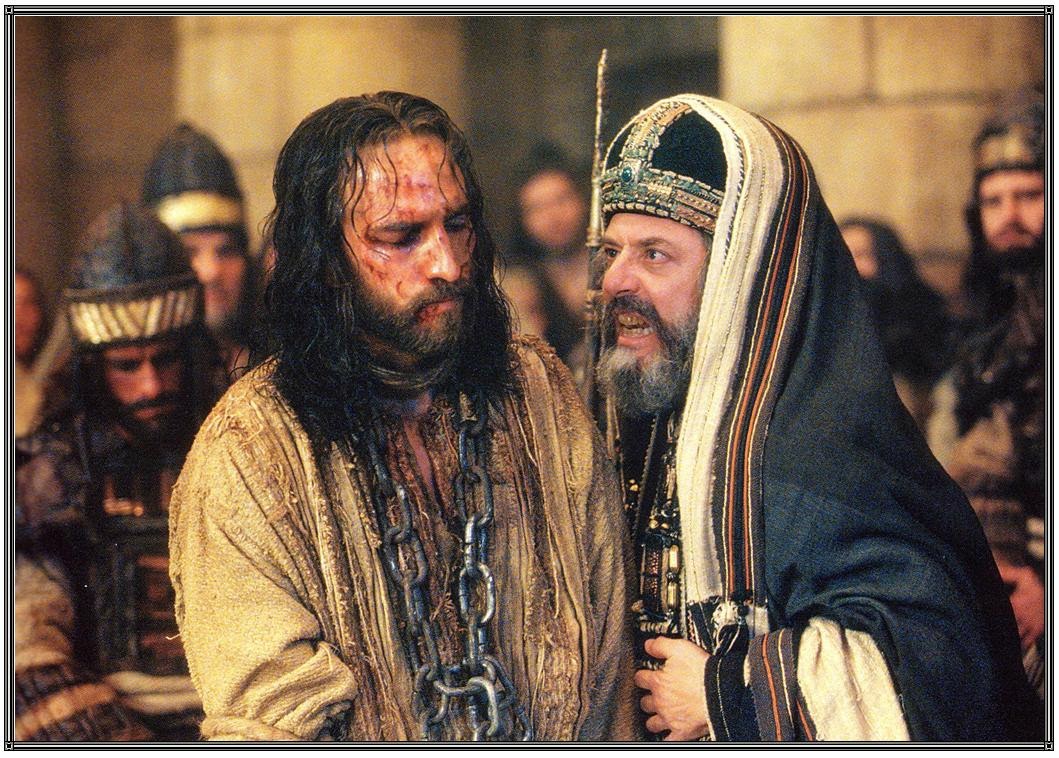The Six Stages Of Jesus’ Illegal Trial.

Although Jesus’ trial lasted less than 18 hours, He was taken to six different hearings carefully controlled to accomplish His death.
The verdict was predecided, but certain “legal” procedures were necessary. A lot of effort went into condemning and crucifying an innocent man.
Jesus went through an unfair trial in our place so that we would not have to face a fair trial and receive the well-deserved punishment for our sins.
The First Three Stages of Jesus’ Illegal Trial Before the Jewish Authorities:
1. Trial Before Annas (The Powerful Ex-High Priest).
Because the office of high priest was for life, Annas was still the “official” high priest in the eyes of the Jews, even though the Romans had appointed another. Thus, Annas still carried much weight among the Sanhedrin. (See John 18:12-24)
2. Trial Before Caiaphas (The Ruling High Priest).
This was done to gather evidence for the full council hearing to follow. Like the hearing before Annas, this hearing was conducted at night in secrecy. It was full of illegalities that made a mockery of justice. (See Matthew 26:57-68)
Note: Both Annas and Caiaphas cared more about their political ambitions than their responsibility to lead the people to God. Though religious leaders, they had become evil. As the nation’s spiritual leaders, they should have been sensitive to God’s revelation.
They should have known that Jesus was the Messiah about whom the Scriptures spoke, and they should have pointed the people to Jesus. But when deceitful men and women pursue evil, they want to eliminate all opposition. Instead of honestly evaluating Jesus’ claims based on their knowledge of Scripture, these religious leaders sought to further their own selfish ambitions and were even willing to kill God’s Son if that’s what it took to do it.
3. Trial Before the Sanhedrin (Full Council).
Just after daybreak, 70 members of the Jewish Council met to rubber-stamp their approval of the previous hearings to make them appear legal. The purpose of this trial was not to determine justice but to justify their own preconceptions of Jesus’ guilt and condemnation to death. (See Matthew 27:1-2, Mark 15:1, and Luke 22:66-71)
The Last Three Stages of Jesus’ Illegal Trial Before the Roman Authorities:
4. First Trial Before Pilate (The Highest Roman Authority).
The religious leaders had condemned Jesus to death on religious grounds, but only the Roman government could grant the death penalty. Thus, they took Jesus to Pilate, the Roman Governor, and accused Jesus of treason and rebellion, crimes for which the Roman government gave the death penalty.
Pilate saw at once that Jesus was innocent, but he was afraid of the uproar being caused by the religious leaders. (See Luke 23:1-6 and John 18:28-38)
5. Trial Before Herod Antipas (Ruler of Galilee).
Because Jesus’ home was in the region of Galilee, Pilate sent Jesus to Herod Antipas, the ruler of Galilee who was in Jerusalem for the Passover celebration. This was a courteous and guilt-sharing act by Pilate.
Herod was eager to see Jesus do a miracle, but when Jesus remained silent, Herod wanted nothing to do with Him and sent Jesus back to Pilate. (See Luke 23:6-12)
6. Second Trial Before Pilate (The Highest Roman Authority).
Pilate didn’t like the religious leaders. He wasn’t interested in condemning Jesus because he knew Jesus was innocent. However, he knew that another uprising in his district might cost him his job.
First, he tried to compromise with the religious leaders by having Jesus flogged (horribly beaten with a whip with metal and glass ends that ripped the skin away from the bones with every lash), an illegal action in itself. But finally, he gave in and handed Jesus over to be crucified. Pilate’s self-interest was stronger than his sense of justice. (See Luke 23:13-25)
So the Roman soldiers took charge of Jesus and led Him away to be crucified by being nailed to the cross for a hideously slow and extremely painful death.
Don’t Miss: “Why Did Jesus Have to Die?”
End of Post